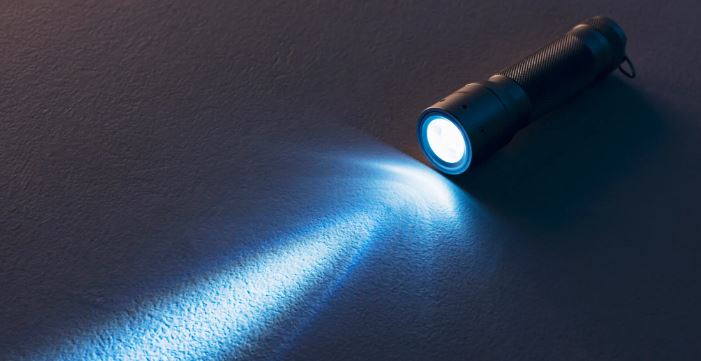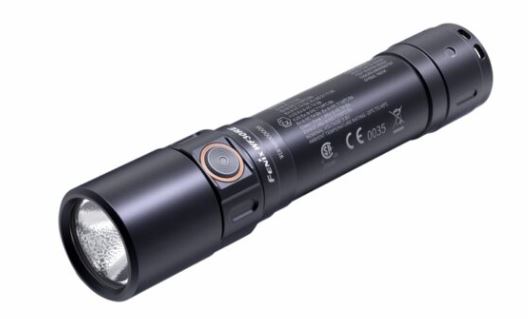
At the heart of an LED flashlight lies the light-emitting diode, a semiconductor device that converts electricity into light. Compared to traditional incandescent bulbs, which rely on a filament that warms up to produce light, LEDs generate light through a process called electroluminescence. This key difference in technology is what makes LED flashlights different from their predecessors, offering a host of advantages that have made them the chosen choice for various applications.
Merits of LED Flashlights
One of the most significant benefits of LED flashlights is their remarkable energy efficiency. LEDs require significantly less power than incandescent bulbs, allowing them to run for prolonged periods on a single set of batteries. This efficiency translates into prolonged runtime, making LED flashlights optimal for situations where dependable, long-lasting illumination is critical, such as camping trips, power outages, or emergency situations. Moreover, the reduced power consumption of LEDs means that users can reduce expenses on replacement batteries, making them an affordable choice in the long run.In addition to their energy efficiency, LED flashlights are recognized for their resilience and strength. Traditional incandescent bulbs are fragile and susceptible to breakage, especially when exposed to shock or vibration. Conversely, LEDs are robust devices with no movable components or fragile filaments, making them very resistant to impact and vibration. This tough construction allows LED flashlights to withstand the rigors of outdoor use, including inadvertent drops, bumps, and exposure to extreme weather conditions. Whether you're walking through rugged terrain, working on a construction site, or simply navigating a dark path, an LED flashlight can provide dependable illumination without the concern of abrupt failure.
Another advantage of LED flashlights is their exceptional brightness and beam quality. Developments in LED technology have led to the production of high-powered LEDs that can produce powerful, focused beams of light. These strong LEDs, combined with precision-engineered reflectors and lenses, allow LED flashlights to create a bright, uniform beam that can brighten objects at a significant distance. The ability to emit an intense, focused beam is especially valuable in outdoor settings, where users need to detect potential hazards or navigate through unlit, unknown environments. Furthermore, many LED flashlights offer variable beam patterns, allowing users to alternate between an expansive flood beam for proximate work and a focused spot beam for distant illumination, providing flexibility for different lighting needs.
The small size and light design of LED flashlights are also notable advantages over their incandescent counterparts. LEDs are much smaller than traditional bulbs, permitting manufacturers to create flashlights that are more portable and more convenient to carry. This portability is particularly beneficial for experts who need to carry a flashlight as part of their regular gear, such as law enforcement officers, firefighters, and utility workers. The featherweight nature of LED flashlights also makes them easier to hold and use for extended periods, minimizing hand fatigue and strain.
In terms of longevity, LED flashlights have an obvious edge over incandescent models. LEDs have an impressive lifespan, often lasting tens of thousands of hours before requiring replacement. This extended lifespan means that users can rely on their LED flashlights for years without the need for constant bulb changes. On the other hand, incandescent bulbs have a much shorter lifespan, typically lasting only a few hundred hours before dying. The longer lifespan of LEDs not only provides simplicity but also contributes to the overall economy of LED flashlights, as users can avoid the expense and inconvenience of constantly replacing bulbs.
Flexibility and Functions
The flexibility of LED flashlights exceeds their primary function of providing illumination. Many contemporary LED flashlights come outfitted with additional features that improve their functionality and adaptability. Some models include numerous lighting modes, such as high, mid-level, and faint brightness settings, as well as strobe or SOS modes for emergency signaling. These varied lighting modes allow users to tailor the flashlight's output to fit their unique needs, saving battery life when complete brightness is not needed. Additionally, some LED flashlights integrate rechargeable batteries, getting rid of the need for throwaway batteries and providing a further green and affordable solution.The resilience and dependability of LED flashlights make them an essential tool in numerous professional fields. Law enforcement officers, for example, rely on LED flashlights for tactical operations, suspect searches, and crime scene investigations. The intense, focused beam of an LED flashlight can aid officers recognize potential threats and gather evidence in dark conditions. Similarly, firefighters and emergency responders use LED flashlights to navigate through hazy buildings, find victims, and analyze hazardous situations. The rugged construction and waterproof properties of many LED flashlights assure that they can withstand the harsh conditions encountered in these rigorous professions.

Outdoor enthusiasts, such as hikers, campers, and hunters, have also adopted LED flashlights as a crucial part of their gear. The long runtime and brilliant illumination provided by LED flashlights are priceless when discovering remote wilderness areas, arranging camp in the dark, or pursuing game during early morning or late evening hours. The compact size and featherweight design of LED flashlights make them simple to pack and carry, guaranteeing that outdoor adventurers always have a dependable source of light at their disposal.
In the realm of home and personal use, LED flashlights have become a necessity for emergency preparedness and regular convenience. During power outages or natural disasters, an LED flashlight can provide vital illumination, enabling families to cautiously navigate their homes, locate supplies, and alert for help if needed. The long runtime of LED flashlights ensures that users have a reliable light source even during extended periods without electricity. Furthermore, LED flashlights are useful for various household tasks, such as inspecting dark corners, reading in dark conditions, or performing minor repairs in poorly illuminated areas. For more detailed information, reviews, and specifications, be sure to visit https://medium.com/@blackbookz.one/nitecore-edc27-3-000-lumen-flat-edc-rechargeable-flashlight-high-performance-compact-pocket-light-ecf750d57b54, where you can explore all the features and benefits that make the Nitecore EDC27 an exceptional lighting tool.